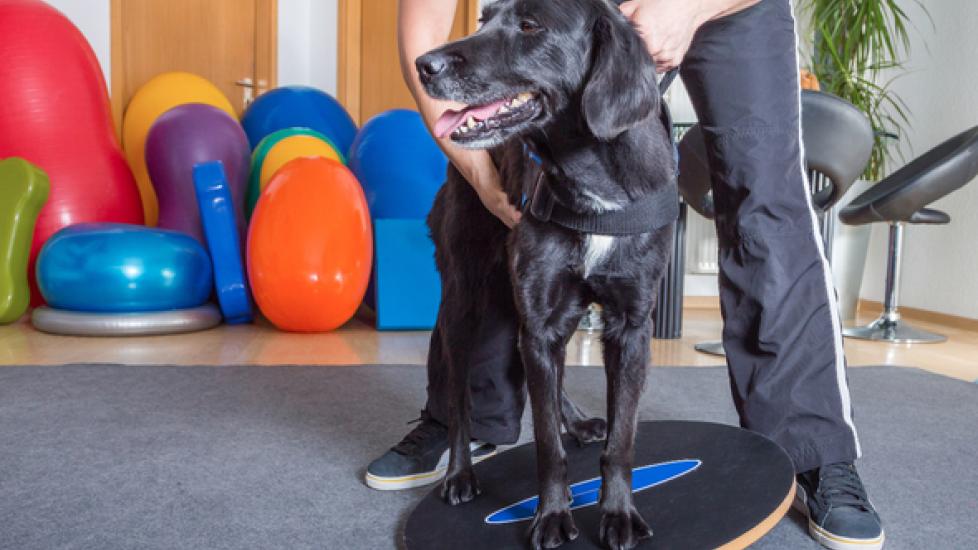Holistic Pet Care Options You Might Not Know About
I have noticed that an increasing number of pet parents are becoming aware of and asking for holistic veterinary care options for their beloved furry family members. This trend is encouraging to me on many levels. It shows that pet parents are taking their caretaker role seriously, doing their research and advocating for their companion animal on a higher level than in the past.
As a veterinarian, I couldn’t support this change more! While I am not a holistic veterinarian (I am a veterinarian who was Western-trained through the UC Davis School of Veterinary Medicine), I do believe in taking an integrative approach, and I have much respect for Eastern medicine and pet parents who choose to employ these modalities.
Holistic veterinary medicine can be defined as therapy that is aimed at treating the whole pet. Conventional, or Western veterinary medicine, focuses on finding a solution or solutions to the problem that your pet is having. Holistic veterinary medicine, in contrast, takes into account an individual pet’s overall well-being and treats the “whole pet,” not just the problem.
Many pet parents aren’t even aware that holistic veterinary care is available for their pets or that there are veterinarians who have been specifically trained in holistic methods. If you are looking to expand the range of veterinary options for your pet with a blend of conventional and holistic veterinary care, the American Holistic Veterinary Medical Association is a good place to start.
Remember—holistic treatments are never a substitution for regular preventive care, including yearly examinations, parasite control and vaccines.
However, there are many holistic therapies available. The following is a partial list of some of more popular therapies available, as well as some newer, “higher-tech” therapies that you might not be aware of.
Photobiomodulation
Photobiomodulation is where veterinary medicine meets quantum physics, and it’s one of the go-to therapies that I utilize on a regular basis for my patients. Another name for photobiomodulation is low-level, or cold laser therapy.
Photobiomodulation harnesses laser light therapy to reduce pain and inflammation and improve tissue repair. National sports teams and elite athletes have been using cold laser therapy for years to speed recovery from injuries, and now the therapy is available for pets.
Yes, I know this sounds like science fiction, but it’s real! Photobiomodulation is so effective that many conventional veterinarians keep a therapy laser in their practice to help treat and reduce inflammation in everything from anal gland abscesses to arthritis and back pain. Chances are that your veterinarian has a therapy laser, so next time you are in the clinic, ask for a demonstration!
Orthomolecular Medicine
Orthomolecular medicine, also called mega-nutrient therapy, is defined by Nobel prize winning creator Dr. Linus Pauling in 1968 as “the preservation of good health and the treatment of disease by varying the concentration in the body of substances that are normally present in the body and are required for health.” Basically, the goal is to raise the level of beneficial nutrients in the body and reduce the level of toxins with the goal of supporting the body in healing or promoting good health.
According to a 2006 peer-reviewed article on orthomolecular medicine, there are many studies that confirm the view that mega-doses of certain nutrients are therapeutic and help prevent disease and slow the aging process. Nutrients that have been reviewed include vitamin C, vitamin E, beta-carotene, B-complex vitamins and coenzyme Q10.
Orthomolecular medicine may be a beneficial complementary therapy for pets who are recovering from cancer or other debilitating diseases, or are suffering from frailty syndrome due to advanced age, and it should be pursued under the supervision of a veterinarian trained in the treatment modality.
Stem Cell Therapy or Platelet-Rich Plasma Therapy
Stem cell therapy and platelet-rich plasma (PRP) therapy both employ cells from the pet’s own body to treat degenerative joint disease or trauma.
Degenerative joint disease, otherwise known as osteoarthritis, is a debilitating joint condition that occurs in a large percentage of cats and dogs. In both of these therapies, a veterinarian harvests either stem cells from fat or plasma from the blood. With stem cell therapy, the fat cells are sent to a laboratory to grow. In platelet-rich plasma therapy, the blood is spun down in a special machine that separates platelet-rich plasma.
In either therapy, the resultant material is then injected back into an injured or arthritic joint. Studies have shown that both treatments are minimally invasive and can be beneficial in reducing pain and increasing mobility in some patients. However, the benefit doesn’t seem to last forever, and some patients require additional therapy with stem cells or platelet-rich plasma to maintain the benefits.
Physical Therapy
Physical therapy is a huge market in human medicine, so it makes sense that rehabilitation is one of the fastest growing segments in veterinary medicine today. The goal of physical therapy is to restore the body to normal function after illness, injury or debilitation.
Veterinarians can undergo additional training and certification to become a certified canine rehabilitation therapist (CCRT). While not technically a holistic veterinarian, a CCRT employs a whole range of Western and Eastern modalities to treat the pet’s whole body.
These treatment modalities can include acupuncture, hydrotherapy, electrical stimulation therapy, ultrasound therapy, pulsed electromagnetic field therapy, massage, stretching, range of motion exercises, strength training, balance exercises and laser therapy.
According to the Canine Rehabilitation Institute website, the goal of these therapies is to “alleviate pain, restore function and create optimum quality of life.” If you want to find CCRT in your area, the website is also an excellent resource for finding a certified veterinarian.
Image via msgrafixx/Shutterstock
